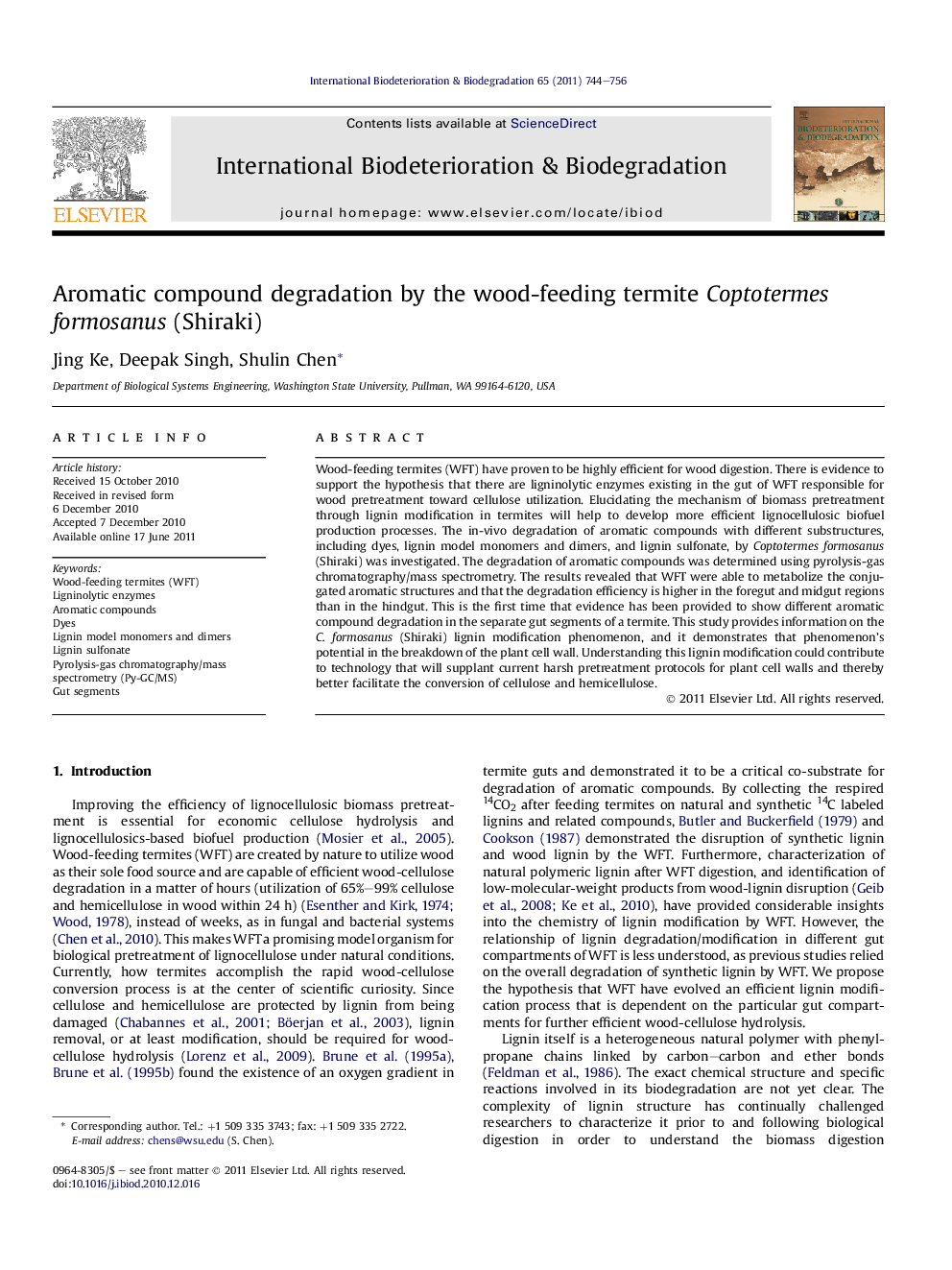| کد مقاله | کد نشریه | سال انتشار | مقاله انگلیسی | نسخه تمام متن |
|---|---|---|---|---|
| 4365327 | 1301754 | 2011 | 13 صفحه PDF | دانلود رایگان |

Wood-feeding termites (WFT) have proven to be highly efficient for wood digestion. There is evidence to support the hypothesis that there are ligninolytic enzymes existing in the gut of WFT responsible for wood pretreatment toward cellulose utilization. Elucidating the mechanism of biomass pretreatment through lignin modification in termites will help to develop more efficient lignocellulosic biofuel production processes. The in-vivo degradation of aromatic compounds with different substructures, including dyes, lignin model monomers and dimers, and lignin sulfonate, by Coptotermes formosanus (Shiraki) was investigated. The degradation of aromatic compounds was determined using pyrolysis-gas chromatography/mass spectrometry. The results revealed that WFT were able to metabolize the conjugated aromatic structures and that the degradation efficiency is higher in the foregut and midgut regions than in the hindgut. This is the first time that evidence has been provided to show different aromatic compound degradation in the separate gut segments of a termite. This study provides information on the C. formosanus (Shiraki) lignin modification phenomenon, and it demonstrates that phenomenon’s potential in the breakdown of the plant cell wall. Understanding this lignin modification could contribute to technology that will supplant current harsh pretreatment protocols for plant cell walls and thereby better facilitate the conversion of cellulose and hemicellulose.
Journal: International Biodeterioration & Biodegradation - Volume 65, Issue 6, September 2011, Pages 744–756